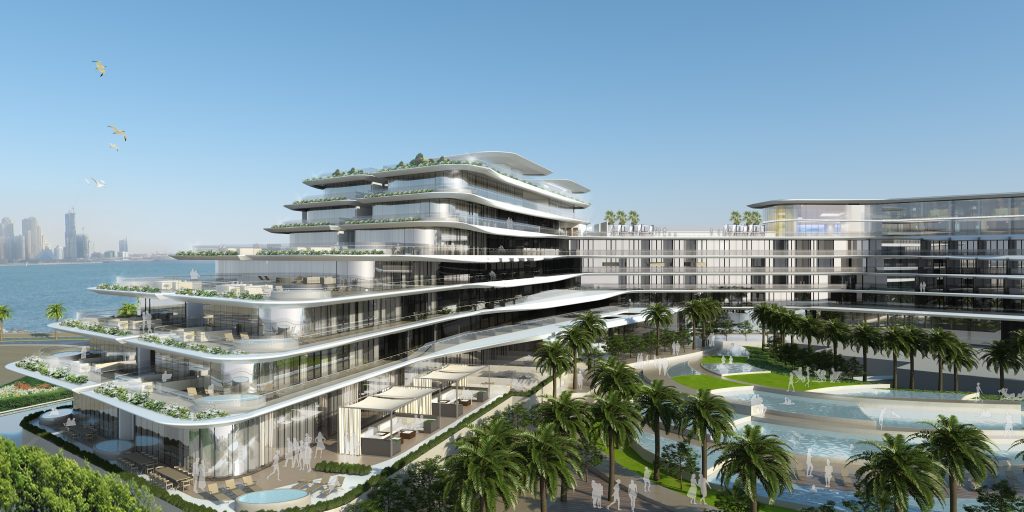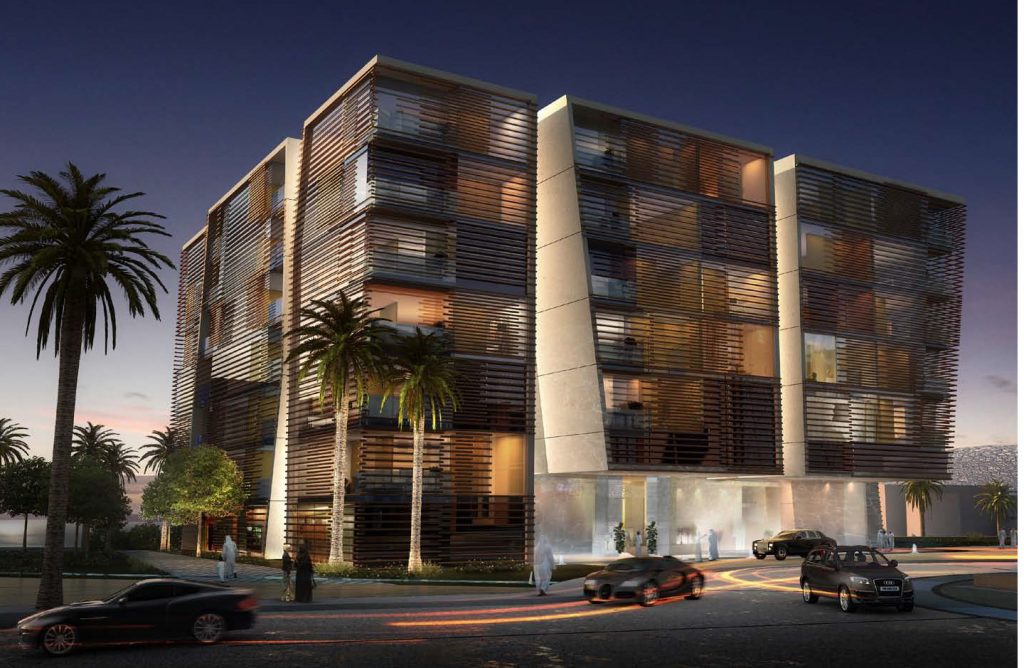You’ve been living and working in Dubai for many years. How has the city shaped the way you approach design?
When I first came to Dubai in 2007, it was a very different place. I was also relatively junior with only 3 years of conservative professional experience under my belt, having worked solely on refurbishments and new buildings within conservation areas in London. Alongside this, Dubai was in a pre-recession boom. Developers had a fairly open budget and too many projects aspired to be “iconic”. It was stimulating but immature and deep down we all knew it couldn’t last. There needed to be a stronger sense of purpose, more consideration to the public realm and to the sustainability of the industry as a whole. The design process was a lot more time consuming at the front end, with many hours spent in the office doing “all-nighters” to produce thousands of option studies. Value engineering was not so much a part of the process at the time and the atmosphere felt generally opulent and wasteful.
Fortunately, I was successful with the Starwood group in winning the concept for the W Hotel on the Palm which became my baby for the next 5 years, and as my experience began to mature into the post-recession market, slowly I became less wasteful with time and resources. One can get a sense of the client’s aspirations in the very beginning and learn to focus and guide the energy more appropriately. If we design ‘smart’ and incorporate the client’s aspirations into the design narrative, we can create elegant architecture without blowing the budget or the fee. W Hotel and Alef Residences, Palm Jumeirah, UAE
W Hotel and Alef Residences, Palm Jumeirah, UAE
You certainly have designed a range of exceptional hospitality projects. Can you tell us more about your commitment to innovative design?
It depends on what your definition of innovation is. If you mean being a pioneer of trending products and technologies, I believe that time is the best judge of success, since the durability and longer term maintenance requirements are paramount to understanding longevity. For instance, the Masdar project was hailed for its innovation in sustainability, however, due to the harsh climate and density of dust particulates in the atmosphere,coupled with the lack of precipitation in the region, the longer term cleaning and maintenance requirements of the solar farms resulted in an unforeseen demand for blue collar workers. This is not to say that we shouldn’t be open to innovative solutions, but rather that we must be conscious that project conceptions are not a one-size-fits-all.
On the other hand, if by innovation we are referring to creative solutions to the built environment, designing in harmony with and inspired by nature, I believe every project presents a unique opportunity to engage in this type of philosophy. Furthermore, quite often there are many lessons to be learned from historical vernacular architecture when designing a sustainable city.
Which would you say is more important to you- progress or perfection?
Perfection is an ideal whereas progress is part of a process, of which I believe includes an element of perfectionism. Moreover, perfection is a destination which can never truly be reached but can only be tended towards. Meanwhile, progress implies a constructive responsivity to multiple factors and particularities in any given project.
Accordingly, how can you determine the success of a project if the target is perfection? What are the key performance indicators for such a measure? If I were to ask a design team, “is it perfect yet?” the answer will always be “no”. Whereas if I were to ask, “has it progressed yet?” the answer would be either “yes” or “no”, which in either case engages a conversation. Design is a conversation which has within it an inherent infrastructure of change, progress, responsivity and optimism.
With changes to climate, technology, and construction, how do you think architects and designers will adapt their ways of practise and change the profession?
We can see in the past 20 years how the information production in this profession has changed significantly. When I first started working in Dubai, the process was a fragmented and decentralised system of sketching designs in 3D for concept, then in 2D towards Tender, and then outsourced to a 3D team for renders if required for marketing. Meaning the same information was being built several times over in the process. Since then file sharing platforms, combined with Revit and other 3D modelling software, has allowed multiple users to work on and review simultaneously. BIM is now a central part of the process, with intellectual property becoming centralised and cloud-based.
Technology will continue to progress exponentially and so a transformation of the architecture profession is inevitable. Bringing modular construction and technologies such as 3D printing into the picture, alongside Artificial Intelligence and parametric design ever improving, it seems that the architect, client and contractor could be subsumed into a one stop shop to maximise efficiency. A developer may just need to plug in the design brief, plot particulars, required architectural style etc into an algorithm and all parameters would be automatically integrated into the generated options, taking all stages of design completely out of the hands of the architect. Personally I can’t see this kind of dystopia being so holistic. Whilst all of these technologies will no doubt transform the profession beyond recognition, there will always be varying levels of integration with some or all of these technologies working in parallel. 5* Hotel, Saadiyat Cultural District, Saadiyat Island, Abu Dhabi, UAE
5* Hotel, Saadiyat Cultural District, Saadiyat Island, Abu Dhabi, UAE
Lastly, do you agree that moving towards genuine sustainability means moving towards a circular economy?
We are extremely industrious when it comes to creating and implementing new technologies and materials, yet have a relatively unevolved approach to waste management. Many construction materials will take hundreds if not thousands of years to break down and return to soil, releasing poisonous toxins in the process. The industrial revolution and subsequent acceleration of human development, since the 18th century, has simultaneously diminished the human capacity to integrate ethics into scientific and technological inquiry. This inturn is causing us to forget the virtues of the past that enabled us to live in harmony with nature. It seems so convoluted and difficult to recycle these days in a city like Dubai where there is so much bling. If it is not new it is less desirable. Yet some of the most sensual and evocative examples of architecture I have ever seen were refurbishments, bringing something that has experienced a previous life into a new life.
Just as an example, for my architectural thesis in the UK I discovered Pullman railway carriages in a small town called Selsey on the south coast of England which were decommissioned in the 1930’s and converted into holiday homes. Some were maintained and closely resembled their original form, yet others had additions and extensions over time, making it unrecognisable from the outside but giving it a truly remarkable experience when transitioning through the interior spaces, suddenly discovering you were in a train carriage with all the original interior finishes.